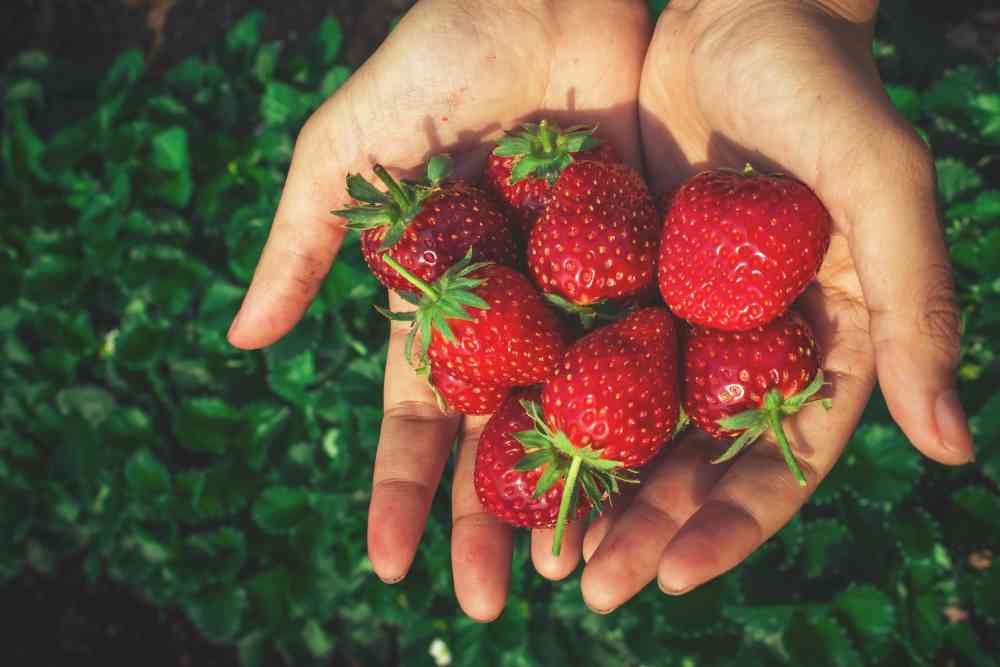Complete Guide to Growing Strawberries in Grow Bags
Strawberries are not only delicious, but they are also quite easy to raise. The best part is that you can also grow strawberries in a grow bag, which means that these plants don’t require much maintenance. Growing strawberries in grow bags have various advantages rather to growing them in the ground. It’s wonderful to grow your own strawberries, and you can easily fit them on your balcony or patio if you do it in a bag. These plants take little care and flourish in grow bags.
Why Grow Strawberries in Grow Bags?
Before we delve into the nitty-gritty, let’s understand why growing strawberries in grow bags can be a great choice. Firstly, grow bags are incredibly space-efficient and ideal for small gardens, balconies, patios, or indoor gardening. They allow you to maximize your growing area without the need for large planting beds.
Moreover, grow bags offer excellent drainage, preventing waterlogged soil and root rot, which can be particularly beneficial for strawberries, as they dislike standing water. The fabric or plastic material of the grow bag retains heat, creating a warm environment that encourages strong root development and early fruiting.
3 best grow bags for strawberries
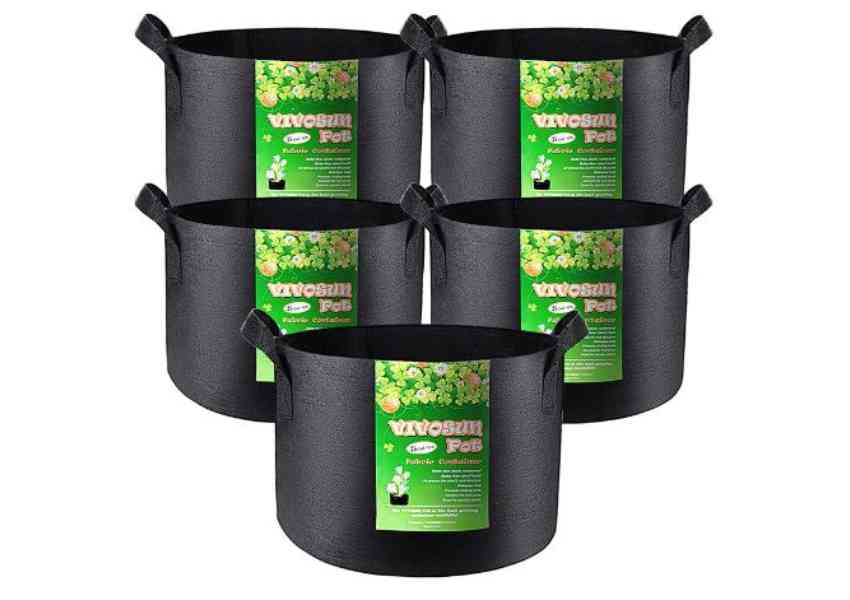
Choosing the proper grow bag for your strawberries is an essential step. Fabric is the greatest material for a grow bag because it is highly permeable and allows for optimum air circulation. Traditional plastic tomato grow bags can also be used. Water will not leak from the sides if you use a grow bag with a waterproof liner.
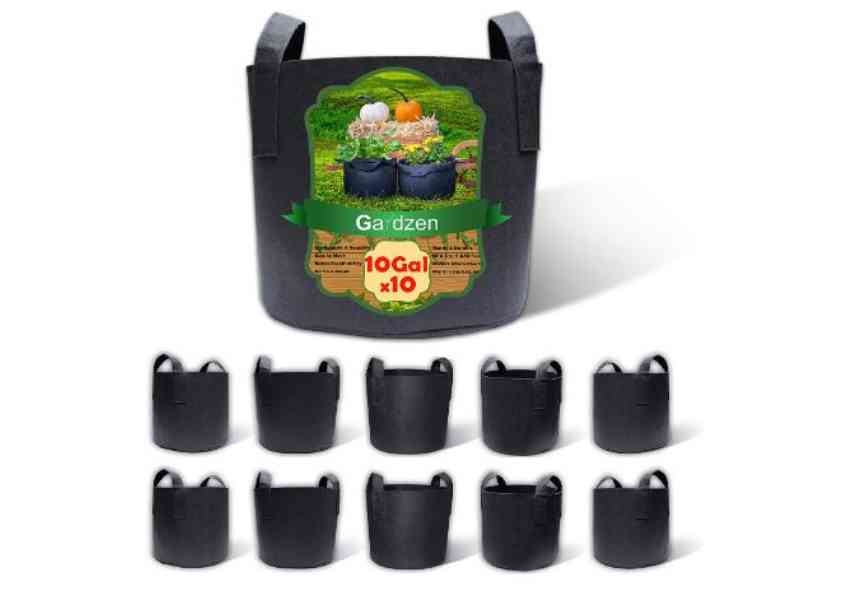
Strawberry grows bags which is having pocket-like openings on their sides where the strawberry plants can be planted in addition to the topsoil layer. The grower can therefore put more plants in these strawberry grow bags. These high-grow bags allow strawberries to develop without ever touching the ground, improving the flavor of the berries. Side holes/pockets can be easily formed in conventional grow bags, as well.
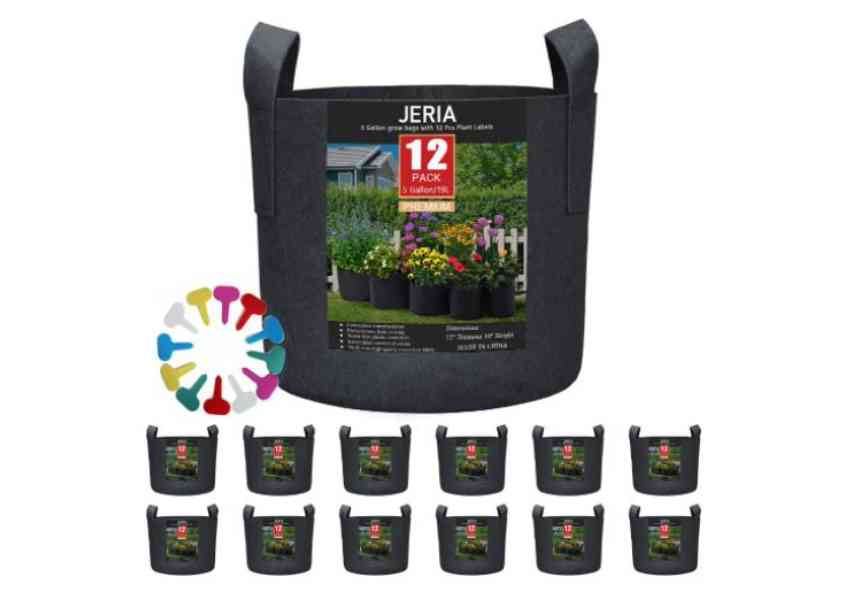
What Size Grow Bag for Strawberries?
There are several sizes available on the market. Consider the space that can be used for them when selecting a grow bag. It is important to note that utilizing a larger bag will not result in more strawberries. Strawberry grow bags should be between five and eight gallons in capacity. These measurements will guarantee that each of your strawberry plants receives enough space and soil to grow healthily.
The larger size ensures adequate root space and helps retain moisture and nutrients, reducing the frequency of watering and feeding. Additionally, larger grow bags offer better stability, preventing the plants from tipping over when laden with fruits.
When Should You Plant?
Planting strawberries in the spring and fall promotes healthy growth. You can purchase strawberry seeds or young plants that are ready to be planted permanently. Although growing strawberries from seeds can be a very remarkable experience, for the majority of gardeners, buying strawberries as young plants is the suggested method of obtaining fresh plants.
Planting
Strawberries require well-drained soil that is high in organic materials. Potting mix can be used, but before putting the mix in the grow bags, you should add compost to it. It’s also a smart idea to apply a small amount of fertilizer that has 10% nitrogen, 10% phosphorus, and 10% potassium, or NPK 10-10-10, as it will add more nutrients. A mixture of coco coir or peat moss, with perlite, vermiculite, compost, or worm castings, is another excellent potting mixture.
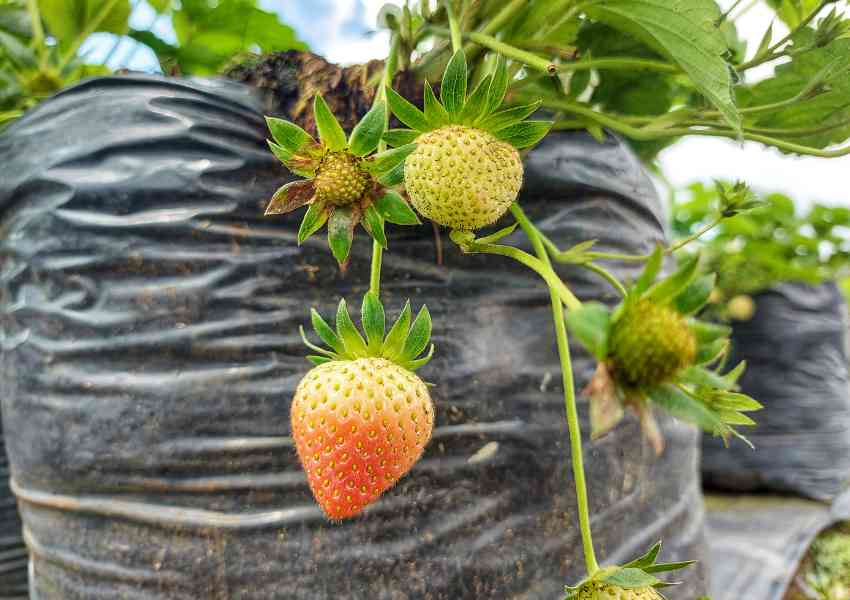
This potting soil is not only reasonably priced, but it also has adequate drainage and functions as a healthy growing medium in general. To promote good water drainage, some grow bags have very big drainage holes; the grower should cover the drainage holes with flat rocks (to prevent soil from leaking out of the bag) before filling the grow bag with potting mix.
The potting mixture must be poured into the side pocket openings as well. Although compost and NPK fertilizer are typically more than enough, the gardener can add a slow-release organic fertilizer to the soil at this point.
After placing a strawberry plant in each pocket of the holes, the top soil layer should be covered with the plants. Make sure to avoid burying the crown, or the area above the roots. The grow bag should now be placed in direct sunlight with the soil lightly yet firmly compacted around the roots.
Watering
After extra water runs out of the bottom of the bag, the grower should water the plants again thoroughly. If a proper potting mix is used, the water will drain well because the bottom has drainage holes. Also, the gardener should water both the plants in their pockets and those in the topsoil layer.
Strawberry plants require a lot of moisture, however, if the liquid remains in the soil, the roots will rot. Because of this, the grower needs to make sure the soil is not wet. The bushes will soon flower, and the berries will be available for picking 4-6 weeks after blooming.
Only fully red berries should be harvested by the gardener. Strawberry grow bags are an economical, space-saving, simple, and enjoyable way to obtain these appealing berries in their fresh, succulent, delicious, and home-grown form. In addition to tasting significantly better than strawberries grown commercially, strawberries grown in grow bags and pots can be highly attractive.
How Many Plants Can You Grow In A Bag?
The number of strawberry plants you can grow in a single bag depends on the bag’s size and the variety of strawberries you choose. Generally, limiting each grow bag to 2 to 3 strawberry plants is best to allow sufficient space for each plant to flourish.
Typically, strawberry plants are compact and fit comfortably inside a grow bag. However keep in mind that, like all other plants, your strawberry plant needs plenty of space to grow, so make your plans appropriately. Planting no more than three plants in a bag will ensure that you receive strong, healthy plants. It ensures that each plant receives adequate soil volume.
What Do You Put Under Grow Bags?
Proper placement of grow bags is essential to ensure the health and productivity of your strawberry plants. Placing them directly on the ground may lead to poor drainage and waterlogging, defeating the use of grow bags. To address this, consider the following options to place under your grow bags:
1. Drainage Trays: Placing your grow bags on shallow trays or saucers can help catch excess water that drains out from the bottom. This prevents the water from pooling on the ground and helps maintain a healthy root environment.
2. Wooden Platforms: Creating a wooden platform or stand to elevate your grow bags can provide better air circulation, reducing the risk of fungal diseases and improving plant health.
3. Pallets: If you can access wooden pallets, use them as a base for your grow bags. Pallets allow air to circulate underneath, promoting better drainage and preventing weed growth.
4. Bricks or Blocks: Placing bricks or concrete blocks under your grow bags can elevate them and facilitate proper drainage. Ensure the blocks are stable and level to prevent accidents.
Grow Bags Advantages
For individuals who only have a patio or balcony for growing space, strawberry grow bags are extremely useful. Any container garden has fewer weed problems, which makes taking care of the plants easier. They are less vulnerable to pests and disease since the plants hang above the ground. Saving important garden space, the strawberry grow bag can support 9 to 15 plants in the air.
Grow Bag Disadvantages
While growing strawberries in grow bags offer numerous advantages, it’s essential to acknowledge some potential disadvantages.
1. Limited Soil Volume: Grow bags, by their very nature, have limited space for soil. This limitation may restrict the amount of nutrients available to the strawberry plants, necessitating regular fertilization to maintain optimal growth.
2. Watering Requirements: Grow bags dry out more quickly than traditional garden beds, especially in hot weather. Adequate and timely watering is crucial to prevent the plants from drying up.
3. Temperature Regulation: The heat retention property of grow bags, which can be advantageous in cooler climates, might become a disadvantage in hot weather. Excessive heat can stress the plants and affect fruit production.
4. Mobility Concerns: Growing bags are movable but less stable than fixed garden beds. Strong winds or rough handling can cause them to topple, potentially damaging the plants.
- 29 Bucket Gardening Ideas for a Lush, Compact Garden - October 30, 2024
- 20+ Chic Boho Bedroom Ideas for a Cozy and Stylish Retreat - June 20, 2024
- 12+ Modern Boho Living Room Ideas to Create a Unique Oasis - June 10, 2024

